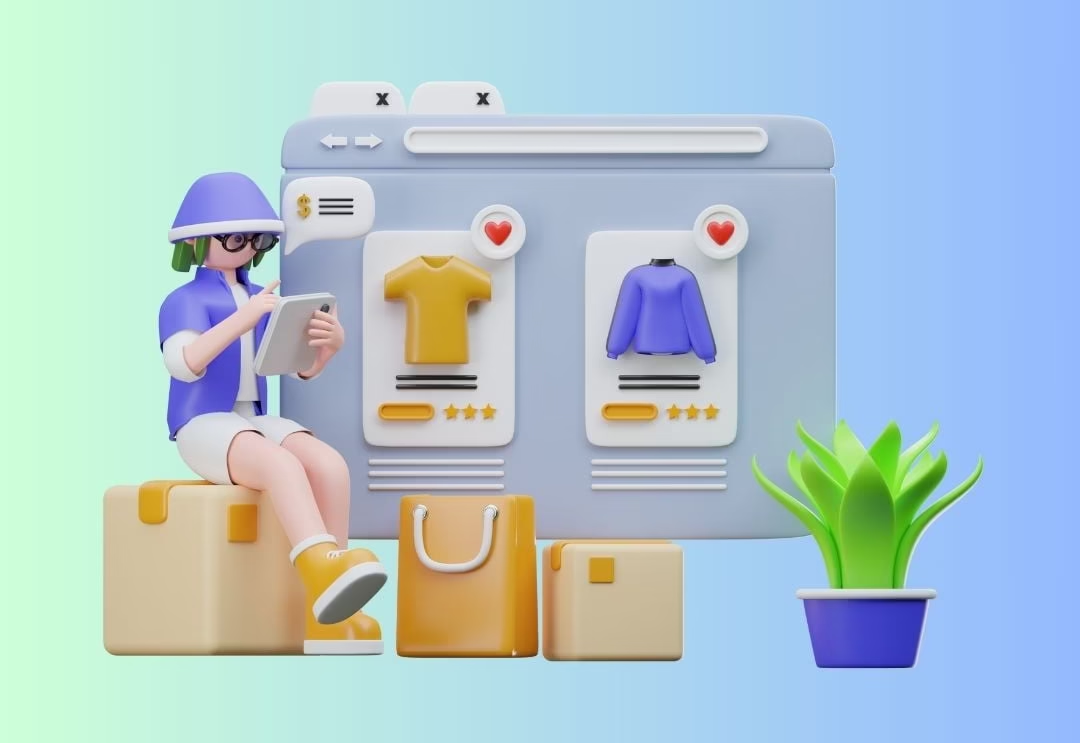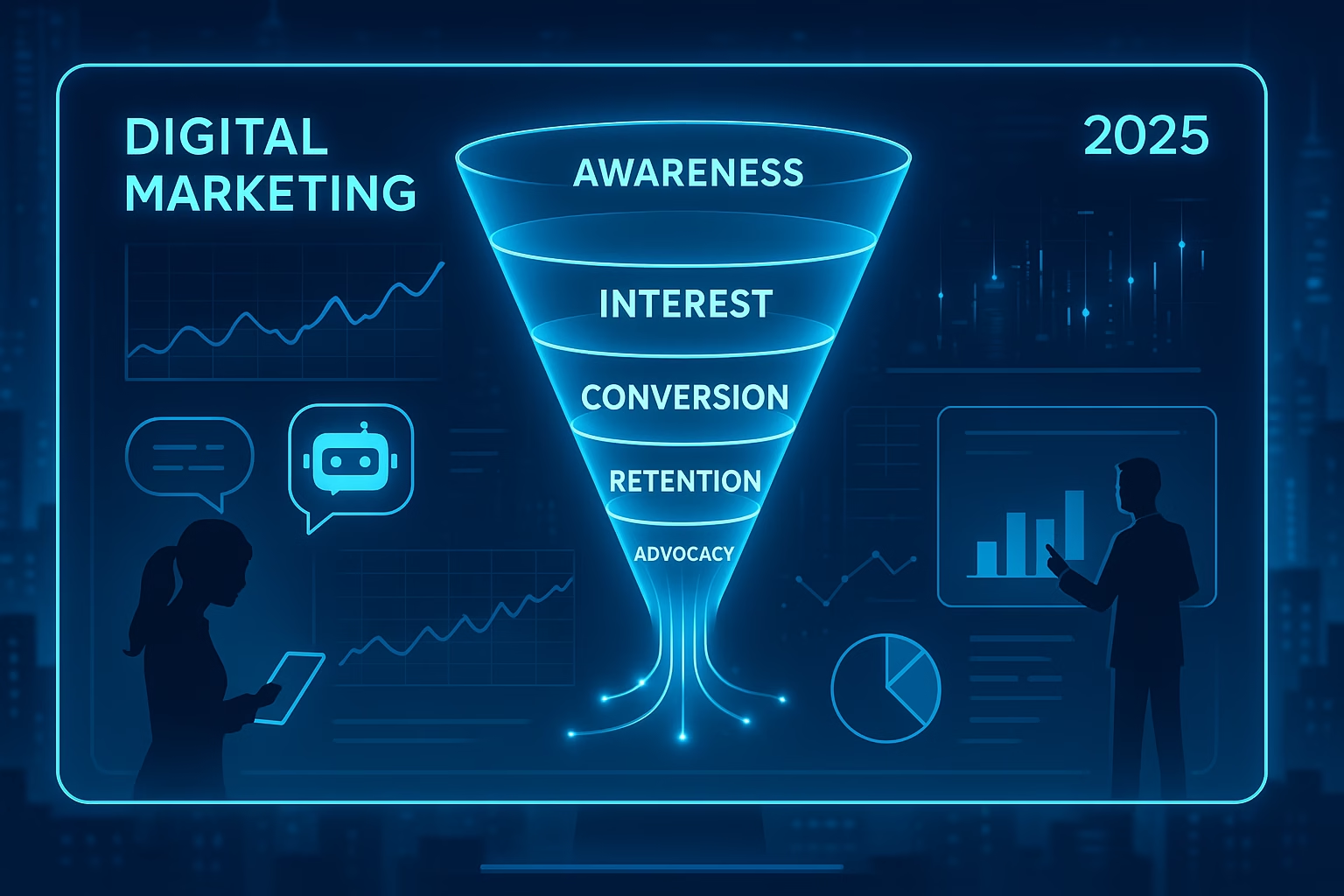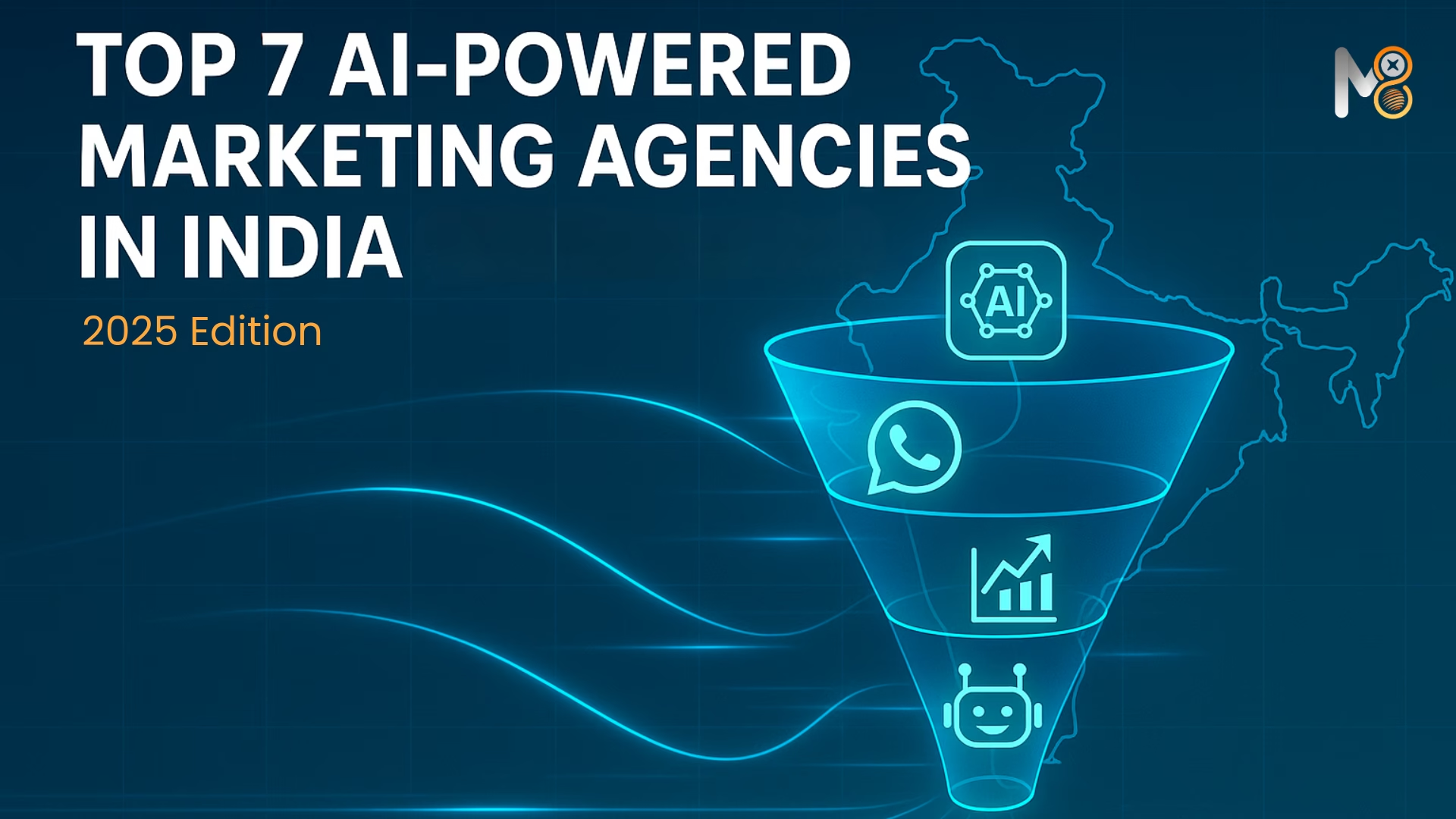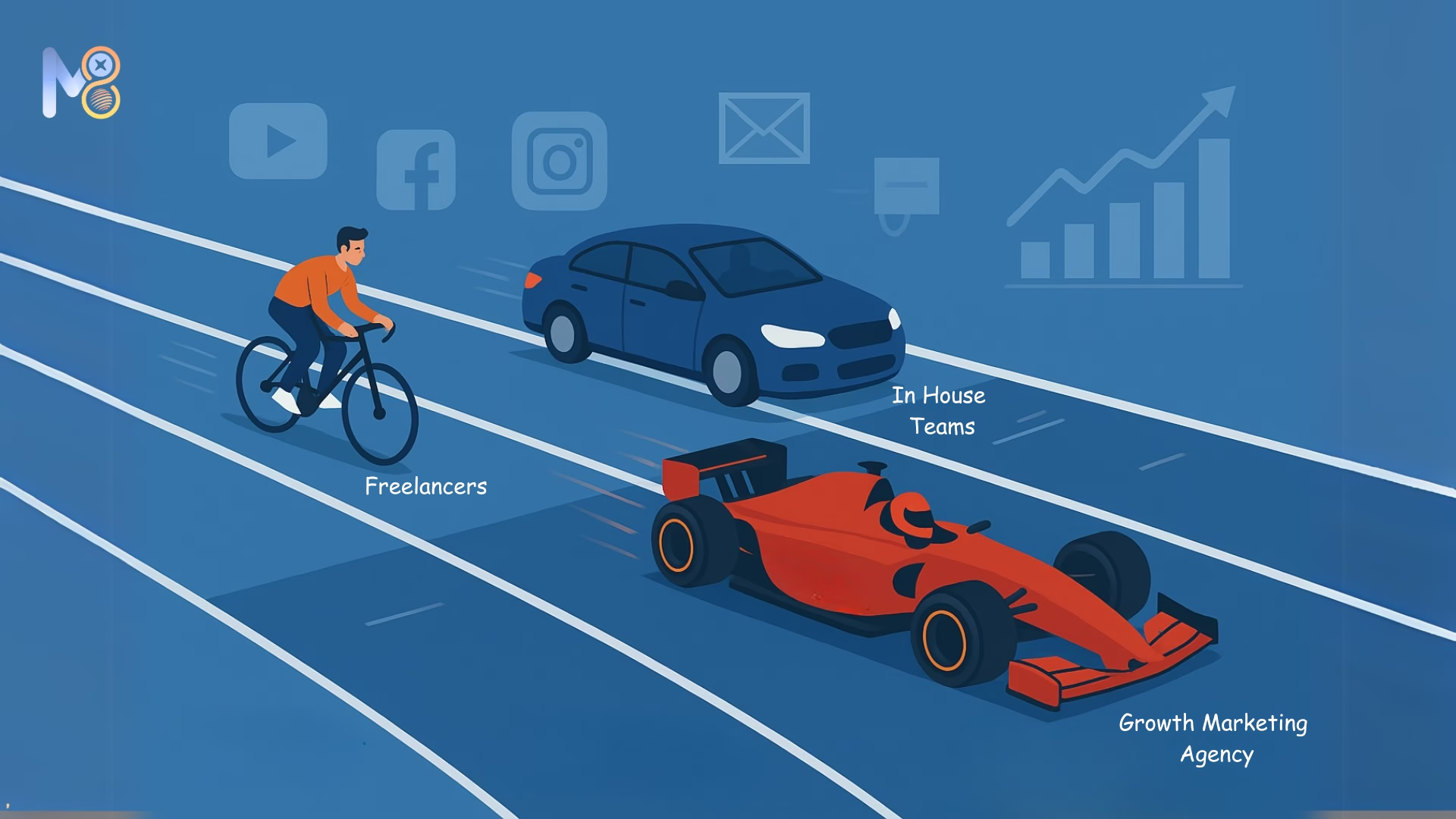AI-Powered Everything
Artificial Intelligence (AI) is no longer the future—it’s here, and it’s revolutionizing the way businesses approach marketing. In 2025, AI will continue to be a game-changer, automating everything from personalized content creation to predictive analytics. For instance, Meta Platforms is expected to see significant financial gains from integrating generative AI-powered chatbots into WhatsApp, with incremental revenue estimated at $16.6 billion in 2025 and up to $45 billion by 2030.
On a broader scale, AI’s influence is visible across all marketing channels. 71% of B2B marketers and 66% of B2C marketers are now using video marketing, and AI is enhancing these efforts by delivering hyper-personalized video content based on user behavior. By 2025, the rise of AI-generated content will likely become a core element of most brands’ growth marketing strategies.
AI-powered automation tools also help businesses cut down on repetitive tasks, allowing marketing teams to focus on more creative and strategy-driven aspects. Whether it’s through chatbots, AI-enhanced CRM systems, or dynamic content creation, embracing AI is a key to unlocking better results in the coming years.
Data Is Your Superpower
Data is the backbone of any successful growth marketing strategy, and its role is only going to grow in 2025. Today’s consumer journey can involve anywhere from 20 to 500 touchpoints, depending on the complexity of the product or service being purchased. This illustrates just how essential it is for brands to leverage data to understand their consumers and predict their behavior at every stage of the buying cycle.
The amount of data available today is staggering, and it’s up to marketers to use it effectively. A study by Google found that 76% of marketers report using customer data to personalize their marketing efforts, but the question remains: how can brands use data to create deeper customer relationships?
By implementing advanced data analytics and AI-driven insights, brands can get a better understanding of their customers’ preferences, pain points, and buying habits. These insights help tailor growth marketing strategies to deliver highly relevant, personalized content that resonates with the target audience. In a crowded market, data-driven strategies will be the differentiating factor for top-performing brands.
Sustainability Is Here to Stay
Sustainability is no longer a fleeting trend—it’s a core component of the modern consumer experience, and it’s here to stay. With 64% of UK consumers actively limiting their consumption of single-use plastic and 33% opting for eco-friendly modes of transportation in 2023, it’s clear that sustainability is becoming an expectation rather than an option for brands.
According to recent market research, the global green technology and sustainability market is projected to reach nearly $62 billion by 2030, growing at a compound annual growth rate of 20.8% from 2023. This trend is driven by increasing consumer demand for eco-friendly products and practices, and it is shaping how brands approach their marketing strategies.
For D2C brands, embracing sustainability isn’t just about being “green”—it’s about being authentic. Consumers are more likely to build long-term loyalty to brands that genuinely integrate sustainability into their product offerings, operations, and messaging. In 2025, expect to see more brands committing to transparent sustainability initiatives that go beyond the surface level.
Video Marketing Keeps Winning
Video marketing continues to be a dominant force in 2025, and its influence shows no signs of slowing down. In fact, 89% of businesses already use video as a marketing tool, and 95% of video marketers agree that it’s a key part of their strategy. According to research, the average conversion rate for websites featuring video content is 4.8%, compared to just 2.9% for those without it.
The power of video lies in its ability to engage and captivate an audience more effectively than any other content format. As a result, more brands will adopt video as a central element of their growth marketing strategies in 2025. Whether it’s for explainer videos, customer testimonials, or live-streamed events, incorporating video into your marketing strategy can enhance engagement, build trust with your audience, and drive conversions.
Moreover, as platforms like TikTok, Instagram, and YouTube continue to grow in popularity, integrating short-form and long-form video content will be crucial for brands looking to stay relevant and visible.
The Creator Economy Is Expanding
The creator economy is one of the most exciting developments in digital marketing, and by 2025, it’s projected to be worth $250 billion. This economy includes influencers, content creators, and digital entrepreneurs who have built engaged and loyal communities across social media platforms.
For D2C brands, partnering with micro and nano creators is one of the best ways to tap into niche audiences that may be hard to reach through traditional advertising. Unlike large-scale influencers, micro and nano creators tend to have highly engaged followers who trust their recommendations and are more likely to make purchases based on their influence.
By collaborating with creators who align with your brand’s values, D2C brands can foster trust and loyalty while reaching new audiences. In 2025, expect to see more brands investing in creator partnerships as a cornerstone of their growth marketing strategies.
The power of video lies in its ability to engage and captivate an audience more effectively than any other content format. As a result, more brands will adopt video as a central element of their growth marketing strategies in 2025. Whether it’s for explainer videos, customer testimonials, or live-streamed events, incorporating video into your marketing strategy can enhance engagement, build trust with your audience, and drive conversions.
Moreover, as platforms like TikTok, Instagram, and YouTube continue to grow in popularity, integrating short-form and long-form video content will be crucial for brands looking to stay relevant and visible.
Omnichannel Is the New Standard
As consumer behavior becomes more complex, the need for a seamless omnichannel experience will continue to rise. In 2025, mobile sales are expected to account for 10.4% of all retail transactions, highlighting the importance of providing a consistent experience across various platforms.
An omnichannel approach ensures that consumers can interact with your brand across multiple touchpoints, from social media and email to physical stores and mobile apps. In a world where consumers expect a personalized, frictionless experience at every stage of their journey, delivering consistent messaging and offers across channels is no longer optional—it’s essential.
Brands that invest in omnichannel marketing will be better positioned to engage with their customers, drive sales, and foster long-term loyalty. The ability to meet consumers where they are, whether online or offline, will give brands a competitive edge in 2025 and beyond.
Diversity and Inclusivity Is More Than a Trend
In 2025, diversity and inclusivity will continue to be integral elements of growth marketing strategies. With two out of three Americans stating that their social values shape their purchasing decisions, brands that authentically reflect diverse voices and communities are more likely to gain consumer trust and loyalty.
The growing purchasing power of minority groups, expected to reach nearly $7.5 trillion by 2026, further reinforces the importance of inclusivity in marketing. Brands that embrace diversity in both their products and marketing efforts are positioning themselves to resonate with a wider, more engaged audience.
For D2C brands, representing diverse cultures, identities, and experiences in their messaging, visuals, and campaigns will be critical for staying relevant in 2025.
Conclusion
As we move further into 2025, growth marketing will continue to evolve, driven by advancements in AI, data-driven insights, and a heightened focus on sustainability and inclusivity. D2C brands that leverage these trends will be well-positioned to stay ahead of the competition and create meaningful connections with consumers.
The future of growth marketing is exciting, with new opportunities emerging every day. By embracing these trends, your brand can develop a winning growth marketing strategy that not only drives short-term results but also builds long-term success. So, are you ready to lead the way?
Let’s connect and explore how these growth marketing trends can help your brand thrive in 2025Let’s connect!








One Response
Hi, this is a comment.
To get started with moderating, editing, and deleting comments, please visit the Comments screen in the dashboard.
Commenter avatars come from Gravatar.